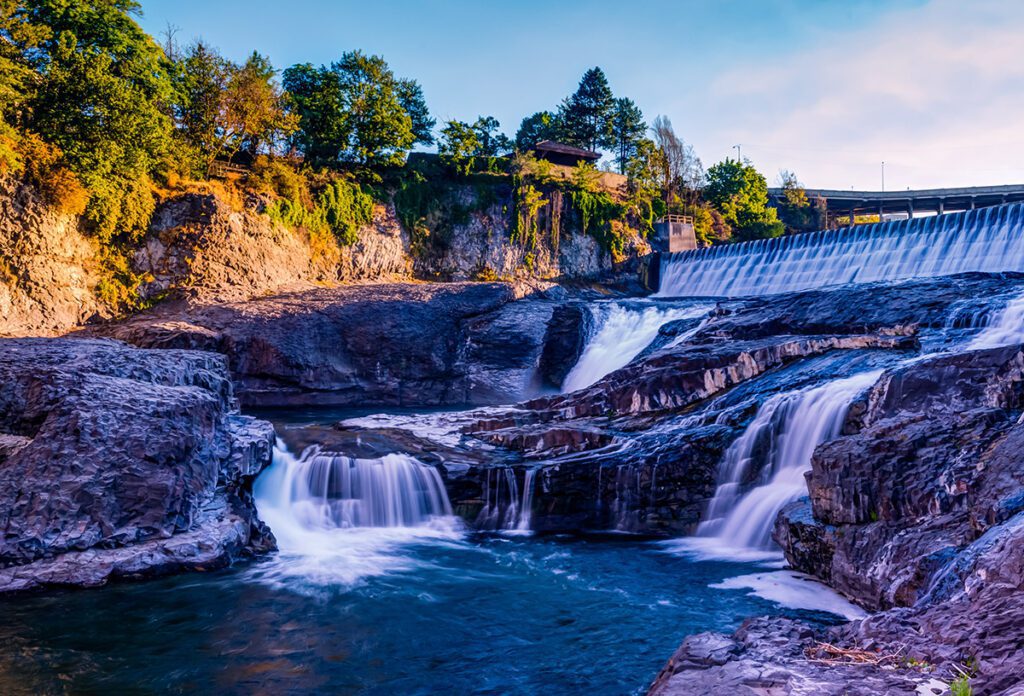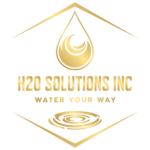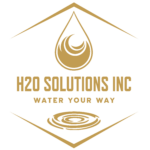Revitalize Your Water, Rejuvenate Your Life
REVERSE OSMOSIS SYSTEMS
OUTDATED DRINKING WATER QUALITY STANDARDS
Receiving a passing grade from the federal government doesn’t necessarily mean the water aligns with the most current health standards. The legal limits for contaminants in tap water haven’t been updated in nearly 20 years and haven’t been reviewed in over 40 years.
The Clean Water Act of 1977 addressed only a limited range of pollutants, including conventional, non-conventional, and toxic substances. It extended compliance deadlines for industries acting in good faith and improved the industrial pretreatment program to protect municipal treatment plants. However, it didn’t focus on drinking water quality. Legal limits for drinking water have not evolved to reflect our updated understanding of how contaminants impact human health since the 1970s.
H2O SOLUTIONS RO SYSTEMS
Filter 1 to 300 gallons per day.
Undergo hydrostatic testing.
Benefit from 24/7 emergency support.
Remove 99.5% of colloidal to suspended matter from various water sources.
Arrive at your site with proper documentation and operator training.
Utilize industrial components for enduring operations.
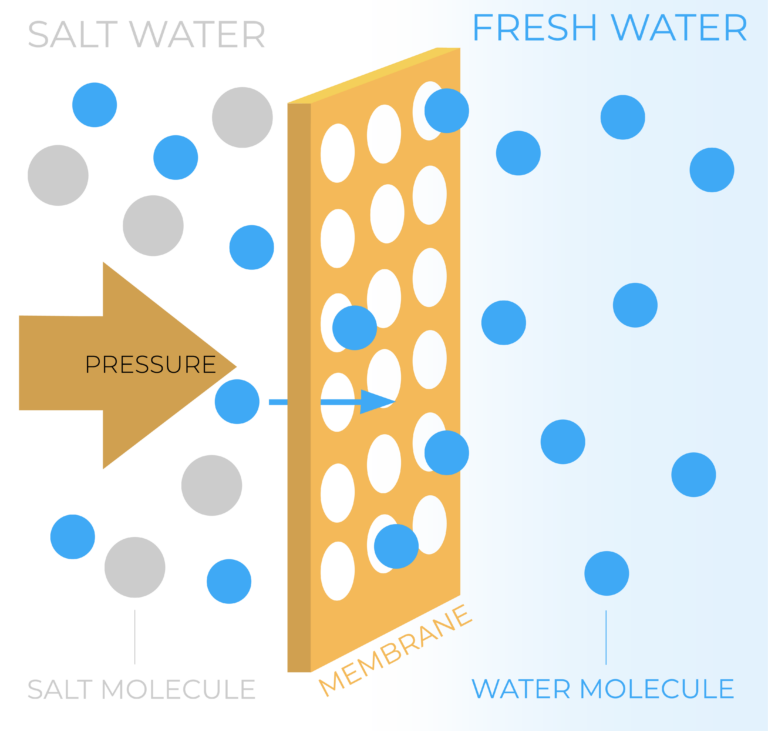
REVERSE OSMOSIS FILTRATION
Reverse Osmosis (RO) systems utilize membranes or microscopic filters that only allow small water molecules to pass. Tailored for regions with limited safe water, these systems also desalinate ocean water. The RO membrane’s microscopic pores effectively remove visible and dissolved contaminants, including those larger than water molecules. However, it may also eliminate healthy minerals. Many RO systems redirect water to mineral beds for added health benefits.
OUR CERTIFICATIONS
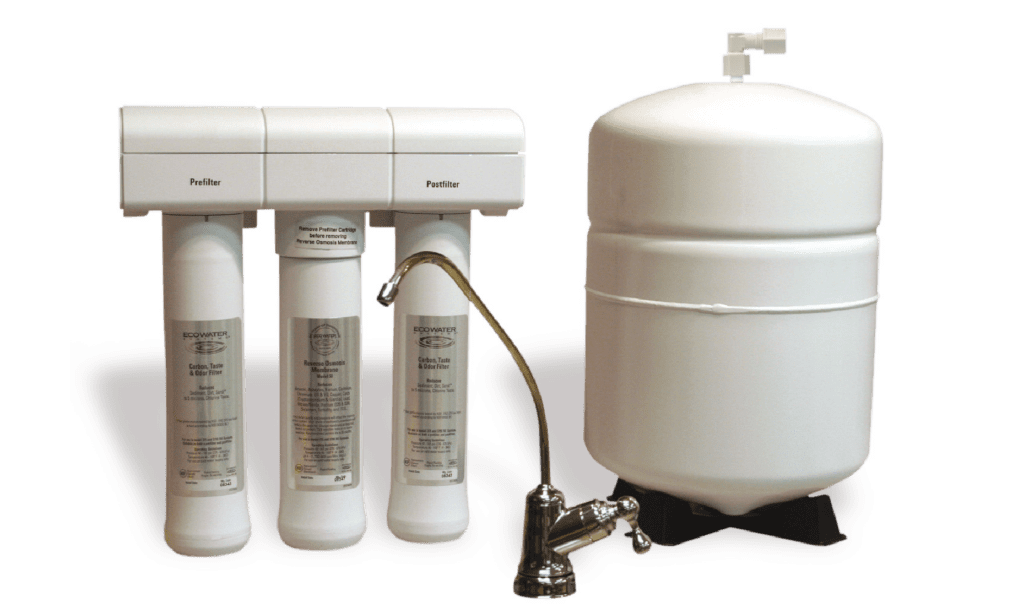
ERO175
PRODUCT FEATURES
- Three Stage Filtering Process
- Carbon sediment filter
- RO membrane
- Carbon post filter
- Durable Chrome-Colored Faucet
- NSF Tested and Certified
- Good for You, Great for the Planet
- By reducing water bottle consumption, you're saving money and the planet
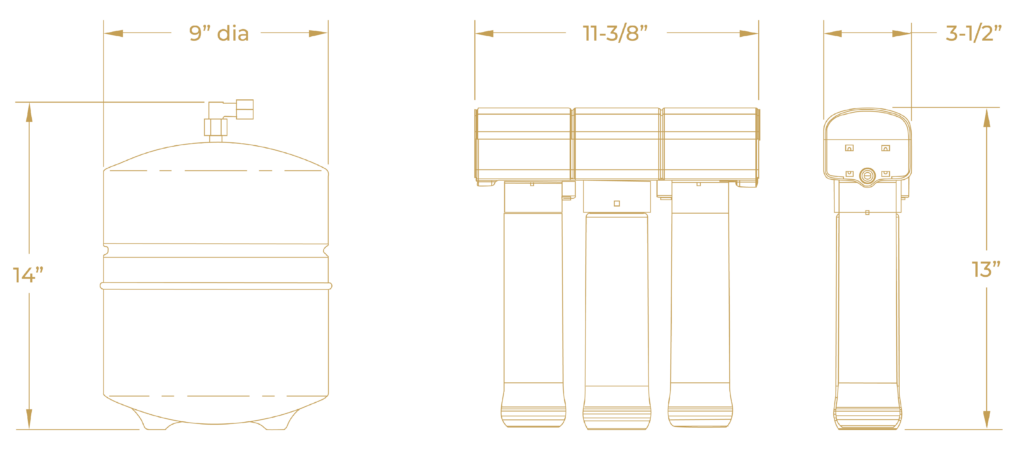
SPECIFICATIONS | ERO175 |
|---|---|
Feed water pressure (min.-max.) | 40-100 psi |
Feed water temperature (min.-max.) | 40-100°F / 4-38°C |
Maximum Total Dissolved Solids (TDS) | 2,000 ppm |
Membrane percentage rejection of TDS (min.) | 91% |
System product water production rate (gal. per day)” | 14.8 |
Feed water pH limits | 4-10 pH |
Maximum iron | 0 |
Maximum hydrogen sulfied | 0 |
Maximum manganese | 0 |
Type of membrane | Thin film composite |
Prefilter (sediment/carbon) | block carbon |
Postfilter (taste and odor) | block carbon |
Storage tank size | 3 gal. |
Automatic shut off valve | Yes |
Shipping weight | 13lbs |
*Tested to NSF/ANSI Standard 58
ERO175: For municipal and well water supplies. Chlorine must not exceed 2.0 ppm
Typical impurities reduced by an EcoWater Reverse Osmosis System Model ERO 175 System
- Ammonium1
- Arsenic2
- Barium
- Bicarbonate1
- Bromide1
- Cadmium
- Chloride1
- Chromium(Hex)
- Chromium(Tri)
- Chlorine Taste & Odor
- Copper
- Cysts(Giardia/Cryptosporidia)
- Fluoride
- Lead
- Magnesium1
- Nitrate/Nitrite
- Radium 226/228
- Selenium
- Sodium1
- Sulfate1
- Tannin1
- TDS
- Turbidity
- Zinc1
Tested and Certified NSF/ANSI Standard 58 by NSF International.
Rated at 50 psi, 77 F, 750 ppm/TDS, product to storage tank.
Product water produced, amount of waste water and percent rejection will vary with changes in pressure, temperature, and total dissolved solids.
Tested by Spectrum Labs, Inc. a state certified testing laboratory.
The system reduces pentavalent Arsenic (As V). The system has been validated on a chlorinated water supply. For more information, see the Arsenic Facts located in the back of the owner’s manual.

EFLOW
PRODUCT FEATURES
- Continuous Water Flow
- EFLOW's continuous flow ensures you never have to wait
- Space-Saving Design
- EFLOW's tankless, space-saving design fits into any kitchen
- Easy Changing Filters
- Easy-to-change filters ensure you always have the best quality water in a few simple steps
- Reduces Water Contaminants
- Filters out water impurities, contaminants, and unpleasant tastes
- Good for You, Great for the Planet
- By reducing water bottle consumption, you're saving money and the planet
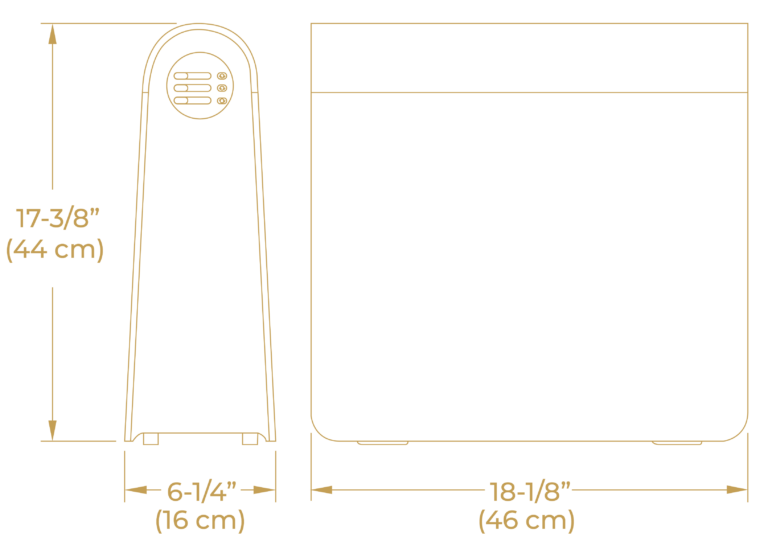
SPECIFICATIONS | ERO175 |
|---|---|
Feed water pressure (min.-max.) | 40-100 psi |
Feed water temperature (min.-max.) | 40-100°F / 4-38°C |
Maximum Total Dissolved Solids (TDS) | 2,000 ppm |
Membrane percentage rejection of TDS (min.) | 91% |
System product water production rate (gal. per day)” | 14.8 |
Feed water pH limits | 4-10 pH |
Maximum iron | 0 |
Maximum hydrogen sulfied | 0 |
Maximum manganese | 0 |
Type of membrane | Thin film composite |
Prefilter (sediment/carbon) | block carbon |
Postfilter (taste and odor) | block carbon |
Storage tank size | 3 gal. |
Automatic shut off valve | Yes |
Shipping weight | 13lbs |
- Chlorine reduction (max. of 2.0 ppm) by the RO Prefilter. REGULAR MAINTENANCE REQUIRED. Chlorine will destroy the RO membrane
- Based on the manufacturer’s laboratory testing.
- Feed Water supply at 50 psi (345 kPA), 77 °F (22 °C), and 750 TDS – Quality water production and percent rejection with changes in pressure, temperature, and total dissolved solids.
- Recovery rating means the percentage of the influent water to the membrane portion of the system that is available to the user as reverse osmosis treated water.
ERO385
PRODUCT FEATURES
- 50 gallons per day production rate
- Industry-rated, high recovery 42% membrane (actual production rate will vary depending on water usage and conditions)
- Changing filters does not require turning off the water, a simple 1/4 turn of the filter shuts off the water and the filter is released simultaneously
- Post-filter reduces PFOA, PFOS, and VOC's
- Additional filter selections are available including alkaline
OPTIONS
- Unique and elegant chrome brushed nickel faucet styles
- Optional electronic faucet indicates when filters and membrane need to be replaced
- System is expandable if additional filters need to be added
- 75 gallon per day membrane
- Adaptor kits are available to easily add a permeate pump system, which improves flow rates at the faucet

SPECIFICATIONS | ERO385 |
|---|---|
Feed water pressure (min.-max.) | 40-100 psi |
Feed water temperature (min.-max.) | 40-100°F / 4-38°C |
Maximum Total Dissolved Solids (TDS) | 2,000 ppm |
Membrane percentage rejection of TDS (min.) | 90% |
System product water production rate (gal. per day)” | 15.75 |
Feed water pH limits | 4-11 pH |
Maximum iron | 0 |
Maximum hydrogen sulfied | 0 |
Type of membrane | High recovery, thin film composite |
Prefilter (sediment/carbon) | block carbon |
Postfilter (taste and odor) | block carbon |
Water recovery | 42% |
Optional:
Sediment filter
High-flow membrane
Permeate pump adaptor | |
Storage tank size | 4 gal. |
Automatic shut off valve | Yes |
Shipping weight | 16lbs |
*Tested to NSF/ANSI Standard 58
ERO385: For municipal and well water supplies. Chlorine must not exceed 2.0 ppm
Typical impurities reduced by an EcoWater Reverse Osmosis System Model ERO 385 System
- Ammonium1
- Arsenic2
- Atenolol3
- Barium
- Bicarbonate1
- Bromide1
- Bisphenol A3
- Cadmium
- Chloride1
- Chromium(Hex)
- Chromium(Tri)
- Chlorine Taste & Odor
- Copper
- Carbamazephine3
- Cysts(Giardia/Cryptosporidia)
- DEET3
- Estrone3
- Fluoride
- Ibuprofen3
- Lead
- Linuron3
- Magnesium1
- Meprobamate3
- Metolachlor3
- Naproxen3
- Nitrate/Nitrite
- Nonyl phenol3
- Phentytoin3
- PFOA/PFOS
- Radium 226/228
- Selenium
- Sodium1
- Sulfate1
- Tannin1
- TCEP3
- TCCP3
- TDS
- Trimethoprim3
- VOC3,4
- Turbidity
- Zinc1
Tested and Certified NSF/ANSI Standard 58 by NSF International. Rated at 50 psi, 77 F, 750 ppm/TDS, product to storage tank. Product water produced, amount of waste water and percent rejection will vary with changes in pressure, temperature, and total dissolved solids.
- Tested by Spectrum Labs, Inc. a state certified testing laboratory.
- The system reduces prentavalent Arsenic (As V). The system has been validated on a chlorinated water supply. For more information, see the Arsenic Facts located on the back of the owner’s manual.
- Tested by IAPMO.
- VOC = Volatile Organic Compounds, 53 compounds in all, including Atrazine, Benzene, Carbon Tetrachloride, 2,4-D, Tolene, Trihalomethanes, and Xylenes.
RECEIVE A CUSTOM WATER FILTRATION PACKAGE
"*" indicates required fields
HOW WE COMPARE
H2O SOLUTIONS ECOWATER FILTRATION
- Modern and efficient systems
- Functional pumps
- Battery backups
- Remote service available
- Innovative designs
- Doesn't require service calls for hardness changes
- Allows you to use an entire tank before the system regenerates
- Automatically adjusts to water usage patterns
- Ecowater's products have smart technology that only uses the required amount of salt based on your water hardness
- Ecowater System can be repaired with a ballpoint pen in a maximum of 20 minutes
- Less maintenance requirements and less cost
- Common systems that are built well
- Maximizes RO water
- Membranes do not require sanitation
- Monitors cartridge use and provides real-time filter life on indicator and/or smart device
- EcoWater systems have battery powered wifi connectivity and monitoring
- Rids itself of iron contaminants
- No products or parts use PFO's or PFA's inside EcoWater equipment
- PROP-65 compliant
- Advanced upflow brining
- Softened water doesn't sit exposed
- No bad water taste. It rises upwards
- EcoWater ERR3700R20 uses less than 1/3 of the salt Culligan systems use. Anywhere from 1.3 LBS to 8.9 LBS
- EcoWater ERR unit only uses 39 gallons of water to flush itself
- NSF 42, NSF 44, NSF 53, NSF 58, NSF 61, NSF 372, and NSF 401 certified
- Made in the United States
- Filters are high quality and don't clog
- Low cost maintenance
- Systems withstand temperature changes
- Only uses 1/2 to 1/3 of the salt RainSoft uses EX: EER3700R20 uses 1.3 LBS to 8.9 LBS of salt per generation
- Helps with sensitive skin, skin conditions, and allergies
- Water softening units soften water
- Removes water contaminants
- No phosphates get in your water
- Units contain technology that systematically work for their intended purpose
- Removes hard water
- No chemicals and other contaminants get into your water
- Carbon filters only have to be replaced every 36 months
- Eco-friendly
- Prevent scale build-up
- No mixed metal welds to corrode or rot
OTHER FILTRATION COMPANIES
KINETICO
- Systems with many tiny parts that make them overcomplex
- Non-functional well pump
- No battery backup
- No remote service
- Similar valve designs to valves used back in 1969
- Requires a service call for hardness changes
- Units regenerate multiple times per day
- Each time the unit regenerates, eater pressure drops
- There is no monitoring system to tell you how much salt your system is using
- Meter disk system only permits complete tank exhaustion at certain settings
- Overcomplicated 59 piece valve that requires expensive maintenance often
- Easier to replace than repair
- Wastes filtered water rinsing membrane with RO water
- Membranes require sanitation, anually causing increased services costs
- Shuts off after 500 gallons of use, causing inconvenience for those who use more water
- Filter life is only visible underneath the sink
- More tubing connections provide more opportunities for leaks
- No pump (electricity), creating no way to rid itself of iron contaminants
CULLIGAN
- Outdated wet brining technology
- Softened water sits in the unit exposed to the air outside of it
- The water is not fresh, and often these units are not kept in clean areas
- Culligan's metal washer dissolves over time on the float, creating a bad taste
- Uses anywhere from 6 to 36 LBS of salt per generation
- Culligan models use 54 to 183 gallons of water to flush itself
- Only NSF 44 certified
- Claims units are "Assembled in the United States," not all parts are made in the United States
- Offers "in-line filters" to help with problem water. These filters get clogged and are hundreds of dollars to replace
RAINSOFT
- In + Out valve doesn't flush, will eventually have to be replaced
- Techs charge hundreds of dollars every 4-5 years to replace the carbon on a RainSoft unit
- RainSoft models "should not be installed where cold and heat are extreme" causing them to misfit extreme temperature changes
- Uses a minimum of 2.25 LBS of salt and a maximum of 22 LBS of salt per regeneration
- Only NSF 44 certified
PELICAN & AQUASAUNA
- Pelican & AquaSauna units are not water softeners
- Polyphosphates + Polycarbonate does not help people with skin conditions or allergies
- Use Scale inhibitor units, meaning they put polyphosphates + polycarbonates in the water. Nothing is removed from your water
- As water goes through the system, the phosphates get in to the water and coat your pipes, water heater, and you
NUVO
- Nuvo units are a 20in filter with citric acid + carbon
- Does not remove hard water
- As water goes through the system, deposits, chemicals, and anything in your water coats your pipes, water heater, appliances, and you
- Does not soften water
- Carbon filters on Nuvo "softeners" have to be replaced every 6-12 months
- Makes the water in your home acidic by adding to the water and not removing an contaminants
- Claims to be "eco-friendly" but Nuvo filters often end up in landfills
LIFESOURCE
- LifeSource units are not water softeners. Hardness is not being removed
- LifeSource filters do not prevent scale build-up
- Scaling causes build-up in pipes, on glassware, cookware, and stiff laundry
- Energy costs increase due to the scale build-up in pipes and appliances. Costs increase from excess soap, detergent, and fabric softener usage.
- Only NSF 42 certified
- Corroded welds & pin holes commonly found in the LifeSource stainless steel systems cause leaks
Spokane's Key Industries that Benefit from RO Systems
Spokane boasts a diverse economy supported by various thriving industries. Here are the key sectors in Spokane that stand to gain significant advantages from using RO systems.
Spokane's Key Industries that Benefit from RO Systems
Spokane has emerged as a prominent center for life sciences, hosting numerous clinical trials and research endeavors. With its impressive array of 9 hospitals, two medical schools, and six higher education institutions, Spokane has cemented its status as a leading healthcare and innovation hub. Institutions in the life sciences sector rely on pure water for many applications, including research, patient care, and pharmaceutical production.
Agriculture
Agriculture is a cornerstone of Spokane’s economy, with approximately 7,000 farms and ranches contributing around $5 billion to the region and surrounding counties. RO systems play a crucial role in agriculture by eliminating harmful contaminants from water used for livestock, irrigation, food processing, and other agricultural activities.
IT/Energy
Spokane’s strategic location, characterized by its low susceptibility to natural disasters, is ideal for critical business services, particularly in the IT and energy sectors. Filtered water ensures risk-free energy management and server maintenance operations, where even minor impurities can lead to significant disruptions.
Manufacturing
The manufacturing industry is vital to Spokane’s economy, constituting 7.2% of the local economic activity. From paper and plastic to metal products and equipment, manufacturing facilities rely on softened water for various mechanical and chemical processes, particularly boiler systems.
Aerospace
Spokane is the fifth-largest aerospace cluster in the United States and the second-largest in Washington state. With over 120 businesses dedicated to the global aerospace industry, the demand for water meeting stringent quality standards is paramount. Reverse osmosis systems are instrumental in ensuring compliance with rigorous drinking water standards, maintaining coolant water quality to prevent metal corrosion, and fulfilling other critical requirements of the aerospace sector.
